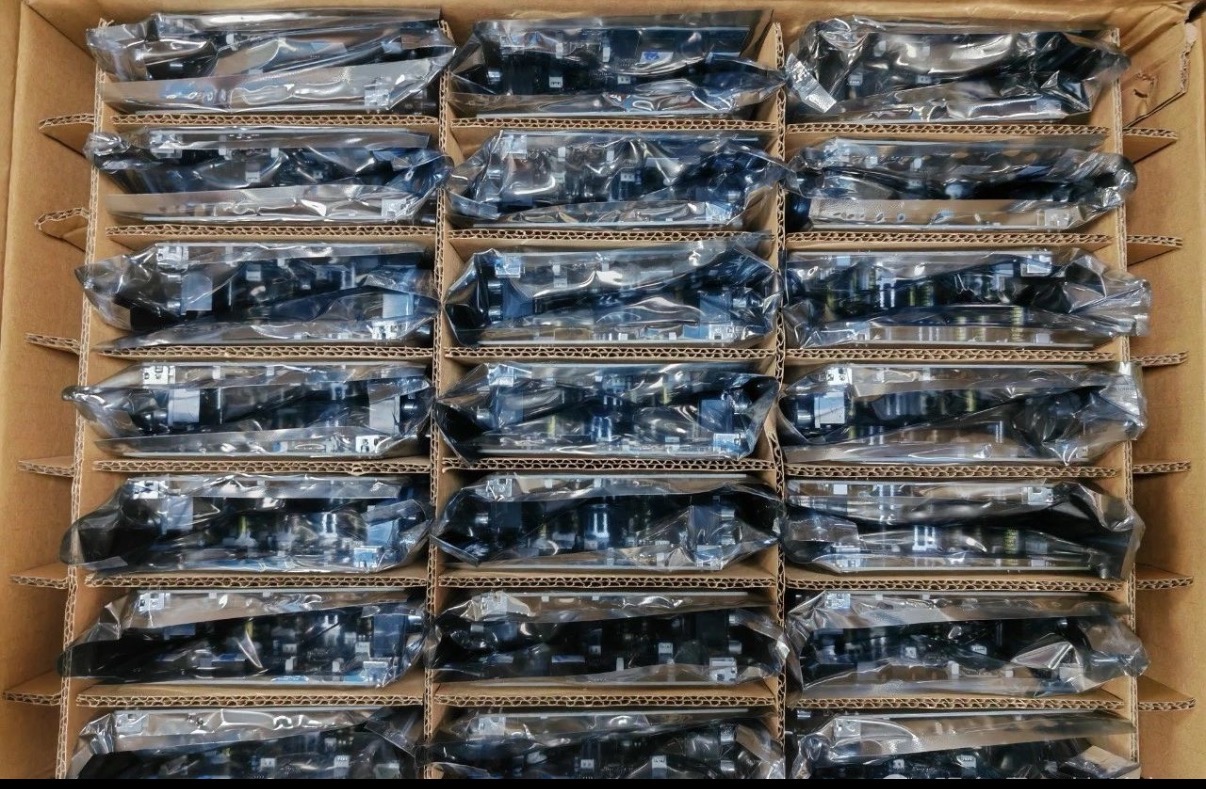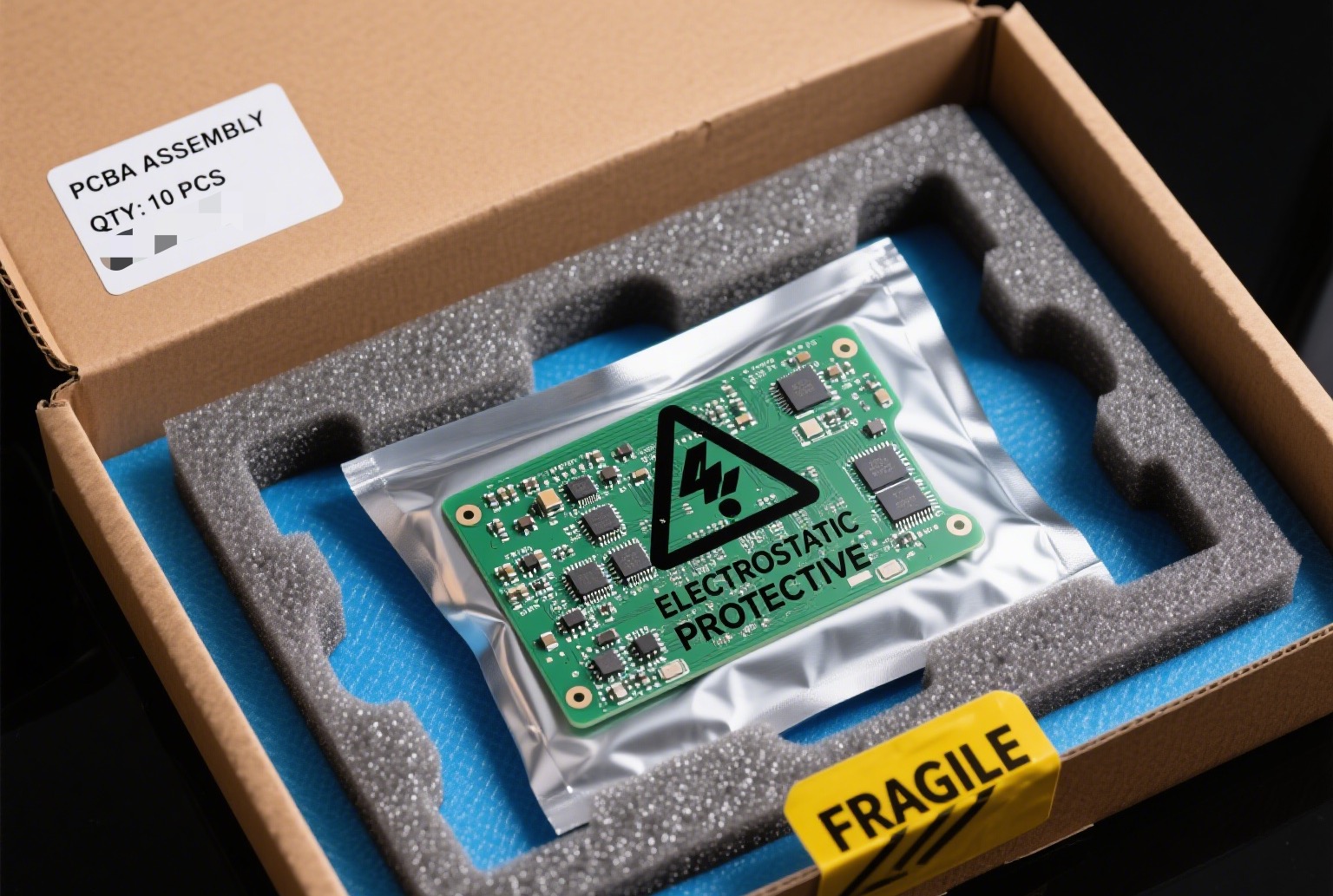In the electronics industry, the packaging and transportation of PCBA directly affect product quality, reliability, and customer satisfaction. Seemingly simple processing, if details are ignored, may lead to component damage, reduced performance, and other issues, resulting in unnecessary economic losses. What should be noted when packaging and transportation PCBA?
According to the different characteristics and transportation methods of PCBA, it is necessary to choose suitable packaging materials, including commonly used packaging materials:
1. Anti static bag: divided into pink anti-static bag (medium protection) and silver shielding bag (high protection), the latter provides better electromagnetic shielding effect.
2. Conductive foam: used to fix PCBA and distribute static electricity. The density should be selected according to the weight of the card.
3. Desiccant: Silicon or Montestone type, usually in quantities of 5-10g/m ³ packaging space.
4. Hard packaging box: corrugated cardboard box or plastic box, providing sufficient support for multi-layer stacking transportation.

Packing Plan: reasonable space utilization and buffer protection
Main requirements for PCBA packaging
1. Anti static protection: Electronic components in PCBA are very sensitive to static electricity, and even weak electrostatic discharge can enter the precise structure inside the chip, causing unpredictable damage. Therefore, packaging materials must have good anti-static properties. Common choices include anti-static bags, anti-static shielding bags, anti-static sponges, etc.
2. Shock absorption and buffering: PCBA may inevitably encounter bumps, collisions, and other situations during transportation, especially for some lamp post components, IC, Connectors, etc. They are prone to deformation and separation due to vibration. This requires sufficient cushioning structure inside the packaging to reduce the impact of external forces on the PCBA. Suitable cushioning materials can be selected according to the size and weight of PCBA, such as pearl wool, bubble film, foam packaging, etc. Wrap tightly during packaging to ensure that the packaging does not shake inside the container. For large PCBAs, it is best to use dedicated boards or frames for fixation, with a certain distance between each PCBA to avoid friction and compression. In addition, the packaging container itself must also have a certain degree of compression force to prevent damage to the molding and internal PCBA.
3. Prevent humid environments and dust: Wet environments can cause oxidation and metal pins in PCBA, affecting the functionality of electrical connections; Dust can adhere to the surface of components and even enter internal connections, leading to poor contact. Therefore, the packaging must have good sealing to prevent moisture and dust from entering. In areas or seasons with high humidity, dryers can be placed inside packaging to absorb moisture from the air and keep the internal environment dry. Before packaging, ensure that the surface of the PCBA is clean to prevent dust from entering the package. For PCBAs that are transported for long periods or long distances, it is recommended to use vacuum packaging, which can effectively prevent moisture and dust, reduce air contact, and delay component aging. For PCBAs that require long-term storage or transportation, vacuum sealed packaging should be used and desiccants should be added.
4. Clear labels: Packaging labels serve as a "navigation light" during transportation, allowing relevant personnel to quickly understand product information and preventive measures. The content of the identification should include basic information such as product name, model, quantity, batch number, production date, destination and acceptance unit, as well as transportation instructions, such as "upstream", "upward" and "fragile". These prompts should be clear, firm and not easy to delete, ensuring that they are clearly visible throughout the transportation process and avoiding information ambiguity and erroneous operations. For example, the label "up" • can prevent the PCBA from being inverted and prevent components from falling off due to gravity; -The sign 'Do not stack'. It can prevent heavy objects from pressing on top and causing damage to the packaging.
5. Standardized operations: from packaging, collection, transportation to unloading. When packaging the PCBA, it is necessary to handle it gently to prevent excessive force from causing deformation of the components of the printed circuit board; When it is stacked, the space should be scientifically planned to ensure firmness, neatness, and not exceeding height or weight.During transportation, if it is road transportation, it is necessary to choose a road with good road conditions to reduce sudden braking, bumps, turns and other violent movements. Be careful when unloading, follow the correct unloading method, and avoid throwing objects from high places. In addition, a comprehensive traceability mechanism should be established to record information about PCBA assembly, transportation routes, and handling personnel. If there is a problem, the cause can be traced in a timely manner to promote further improvement.

Single PCBA anti-static packaging
The packaging and transportation of PCB components is a systematic task that covers multiple aspects such as anti static voltage, shock buffering, moisture and dust prevention, identification information, and operation steps. Only by strictly following these regulations can we minimize potential hazards during transportation, ensure that printed circuit board components arrive intact at the destination, and lay a solid foundation for subsequent production and use.